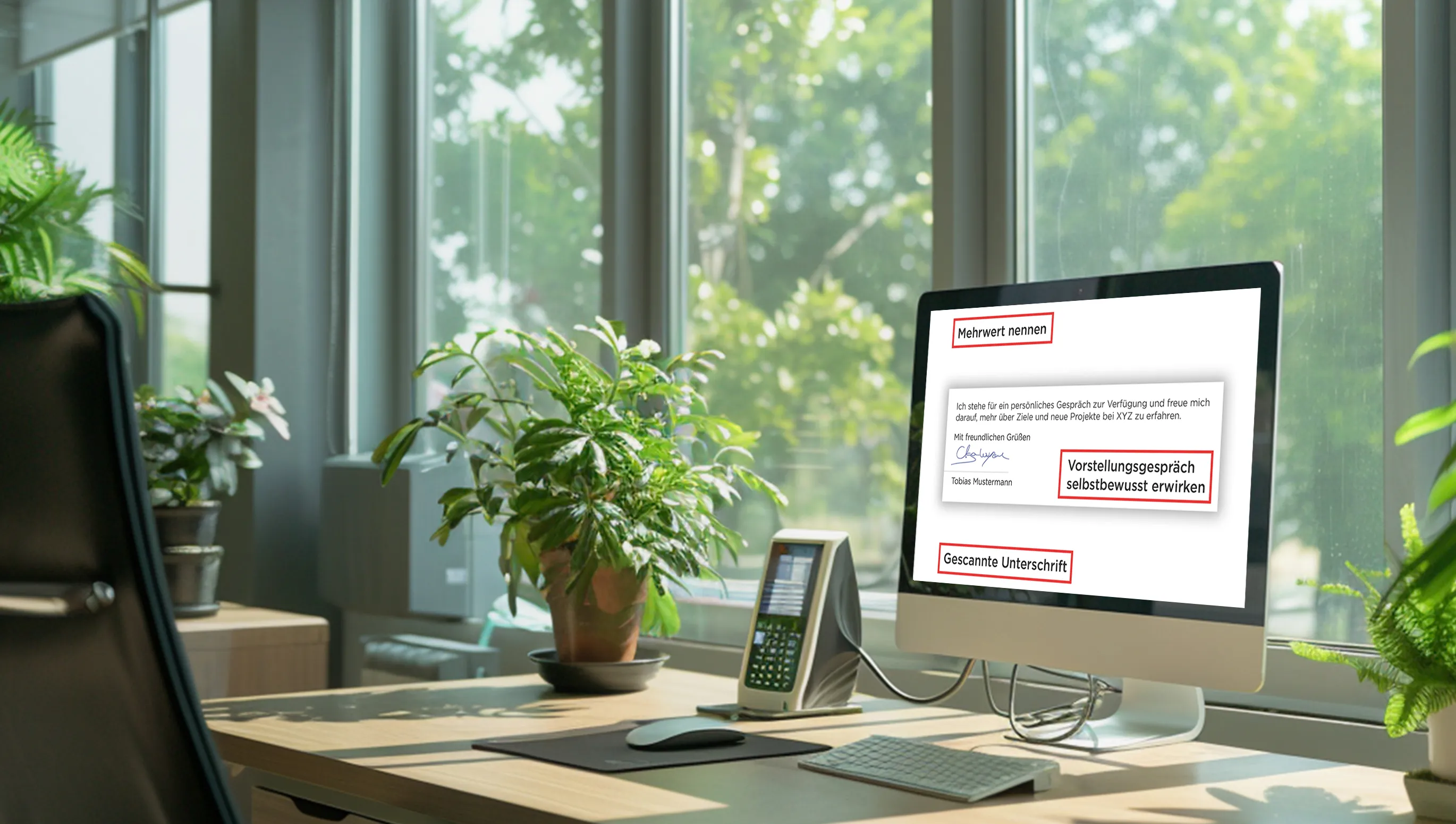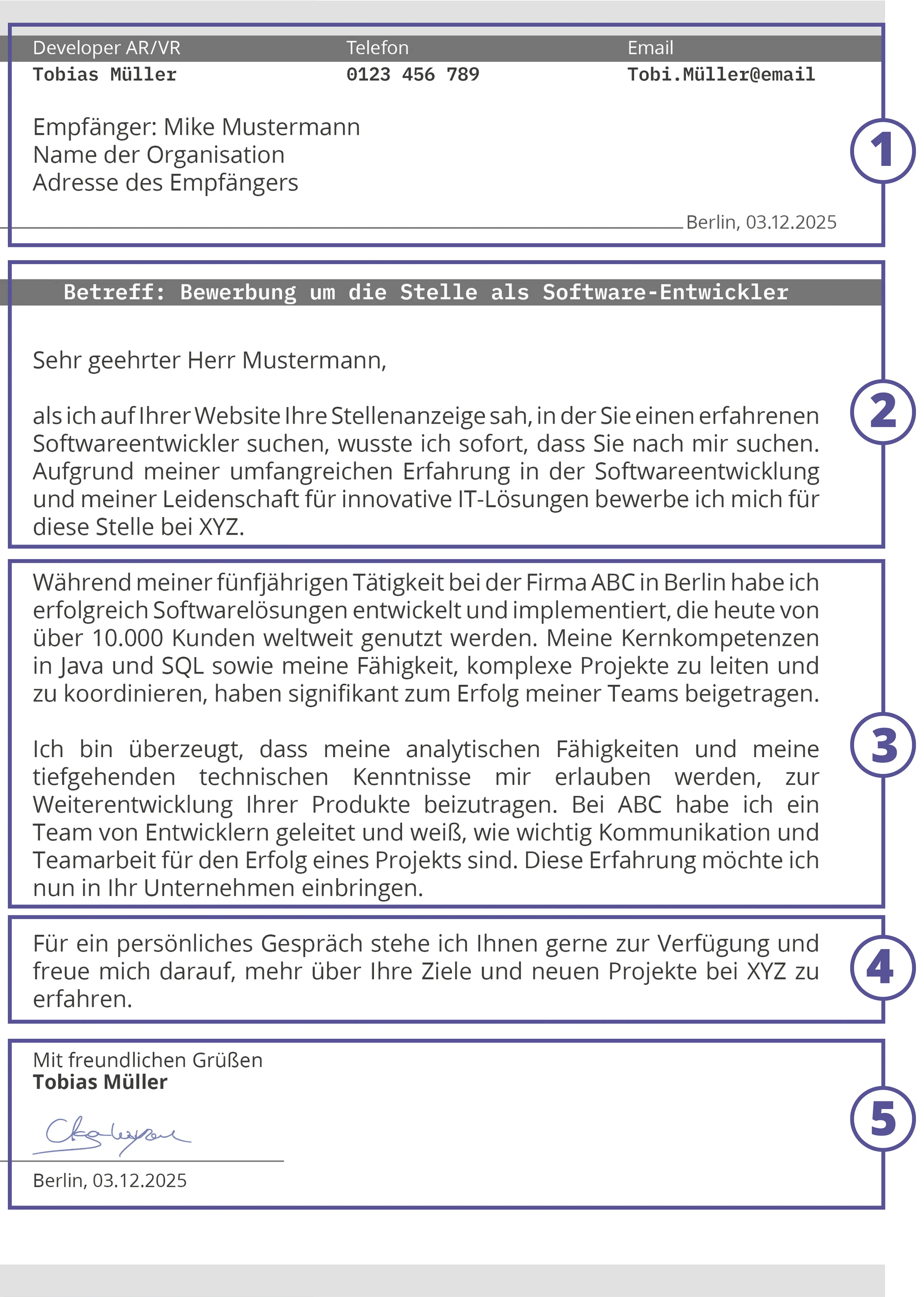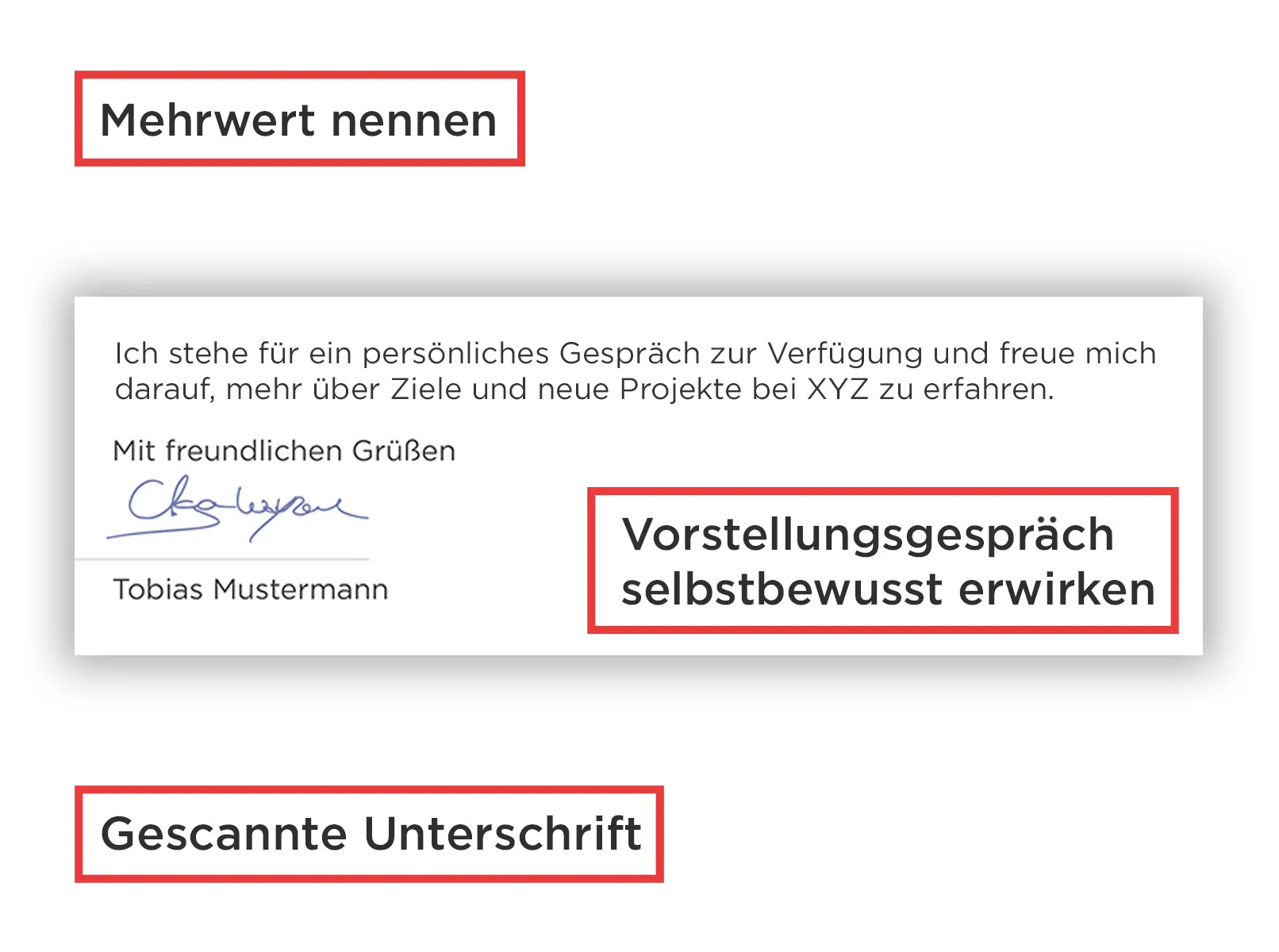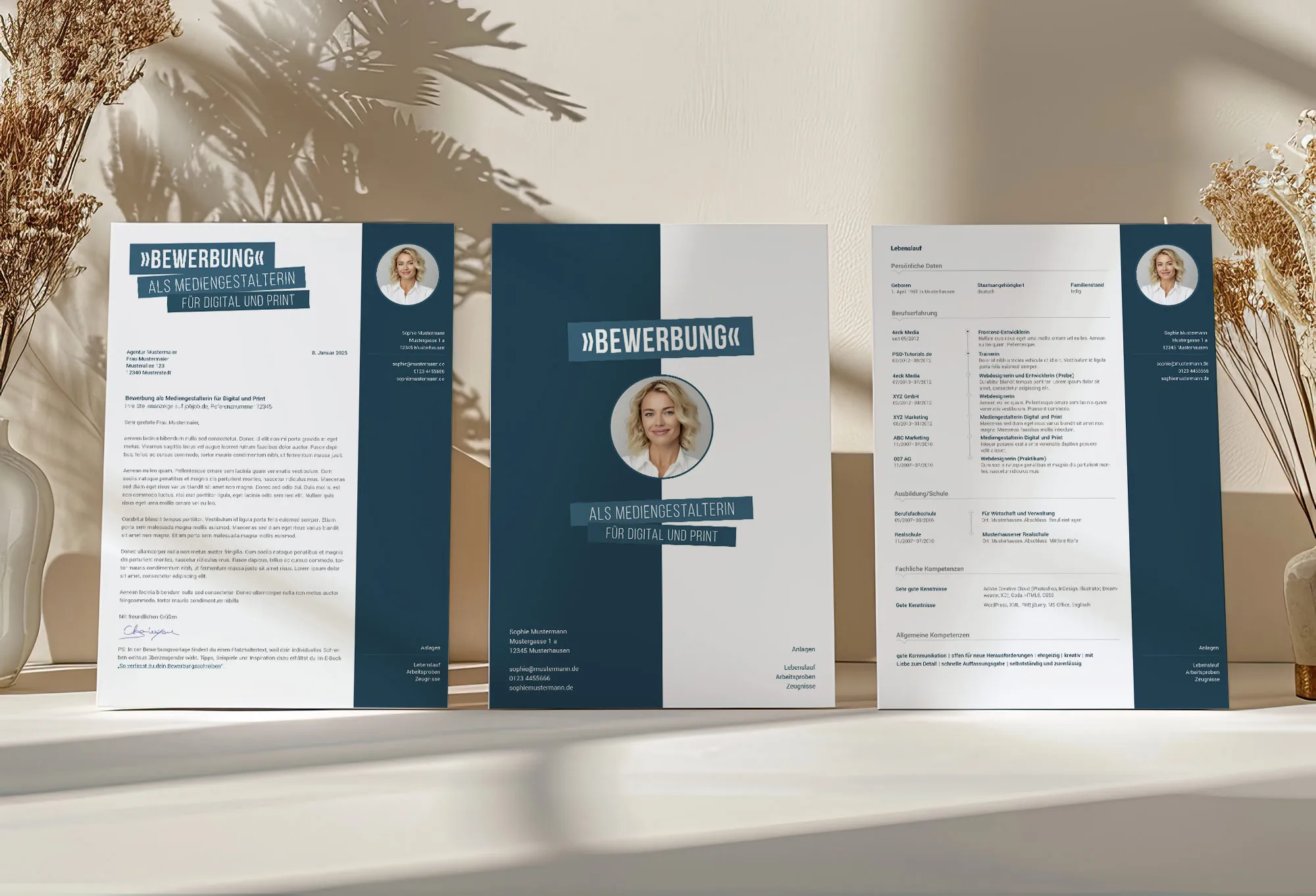Closing in the job application letter: Tips, examples, common mistakes
A high-quality conclusion of a cover letter can become a final confirmation for the employer to invite you to an interview, provided that the last lines are well crafted. This final paragraph should clearly summarize your motivation and confirm your interest in the position. It is important to avoid general phrases and provide specific arguments on why you are the ideal candidate for this position. Remember that the concluding part should be short yet informative, highlighting your strengths and professional achievements. Mention your readiness for further steps, such as an interview or providing additional information. Do not forget to express your gratitude for considering your application. Finally, emphasize your interest in collaboration and express your hope for a positive outcome. A high-quality conclusion helps to leave a positive impression and increases your chances for a successful result.

Before you read this article, please note that it is part of a large series of articles on the structure of a cover letter. Below, you will find an illustration depicting the structure of a cover letter, as well as links to other related articles.

- Heading of a cover letter. In the header, provide your contact information: name, address, telephone number, email address. On the right side, note the date. On the left, include the recipient's contact information: name, position, company, and address.
- Introduction of a cover letter. Start with a strong opening sentence that shows your interest in the position and the company. Optionally, briefly mention how you found the job posting. For example: Sustainable waste management is a crucial contribution to environmental protection, and your company is dedicated to this important task as a waste management company. I share this conviction and want to contribute my expertise to achieve our ecological and economic goals together..
- Main body of a cover letter. Describe your relevant qualifications and experiences. Explain why you are the ideal fit for the position, and highlight specific achievements or skills that align with the company. For example: During my tenure as [current position] at [current company], I have gained extensive experience in the field of waste management and disposal. I am particularly proud of implementing a recycling program that increased the recycling rate by [percentage]. These accomplishments inspire me to further expand my knowledge and tackle new challenges.
- Conclusion of a cover letter. Summarize why you are suitable for the position and express your anticipation for a personal conversation. For example: A forward-thinking waste management requires not only technical skills but also continuous development. Your values and visions align perfectly with what I am seeking. I look forward to discussing your expectations and my potential contributions in a personal conversation. Thank you for your time and consideration.
- Closing phrase and signature of a cover letter. Conclude the letter with a polite closing phrase such as "Sincerely". Leave space for your handwritten signature and write your name below.
How to Prepare for Writing the Conclusion of a Cover Letter
Before you compose the conclusion of your cover letter, thorough preparation is essential. This process helps you structure your thoughts, gather necessary information, and highlight the key aspects that should be emphasized. Here are specific steps to help you prepare for the process of writing an effective conclusion and increase your chances of success.

Information Gathering
Begin with a detailed analysis of the job posting. Read the job posting carefully again. Identify the main requirements for you as a candidate and the employer's expectations. Pay attention to the key competencies and experiences that are a priority for this position.
Conduct thorough research on the company. Study information about the company: its mission, values, culture, and projects. Find employee reviews to understand the internal climate and potential challenges.
Preparation for Writing
Continue your preparation by evaluating your achievements. Review your past successes and accomplishments that align with the requirements specified in the job posting. Select the most relevant examples that support your application.
Compile a list of your skills and competencies. List the most important ones that match the requirements. Prepare brief examples from your own experience that demonstrate the presence of these skills.
It is also important to clarify your motivation. Try to understand why you want to work in this company and in this position specifically. Formulate clear arguments that emphasize your interest and motivation.
You will find, with our application templates, you have better chances of getting a job than without them. All our templates are modern and high quality. You just have to go to the category of application templates and choose a design that fits your profession.
Writing a Draft
Try to give your text a specific structure. Divide the closing paragraph into logical parts: summary, motivation, call to action. Use clear and concrete formulations, and avoid general phrases. Better explain your readiness for further steps. Emphasize your willingness to have an interview or provide additional information. Describe how you would like to express your gratitude for considering your application. Make sure that the draft of your closing meets all the requirements of the job posting and highlights your advantages.
We also have a series of articles on building a resume that will definitely help you. It's worth investing 10 minutes to read the articles and avoid making silly mistakes that could cost you the job in the end.
How to Write a Good Conclusion for a Cover Letter
After preparing well and gathering all the necessary information, including your key qualifications and achievements, it is time to compose the closing paragraph of your cover letter. A high-quality conclusion should be clear, convincing, and leave a positive impression of you as a candidate. Here is a step-by-step guide on how to craft it correctly:
Summarize the main arguments: Start with a brief summary of the key points in your letter. This helps remind the employer why you are the ideal candidate. Example: "Due to my experience in marketing and successful implementation of digital strategies, I believe I can make a significant contribution to the development of your company." Such a summary briefly recalls your key achievements and shows that you understand which skills are important for this position.
Express your interest in the position: Clearly describe your interest in the position and the company. The employer should understand that you are genuinely interested in this job. Example: "I am very interested in joining your team and working on exciting projects." Such a style of text confirms your motivation and desire to work in this company.
Suggest next steps: Emphasize your readiness for the next steps in the application process. This could be an invitation to an interview or providing additional information. Example: "I look forward to discussing my application in an interview and am available to provide further information if needed." This step demonstrates your readiness to continue the application process.
Express gratitude: Do not forget to thank the employer for considering your application. This creates a positive impression and highlights your politeness. Example: "Thank you for considering my application. I look forward to your feedback." Gratitude always leaves a good impression and shows that you appreciate the employer's time.
End the letter: Conclude the letter with a standard closing formula suitable for official correspondence. Example: "Yours sincerely". This is a professional and polite way to end the letter.
Remember that crafting a high-quality conclusion for a cover letter requires a clear structure and attention to detail. With the above steps, you can create a closing paragraph that highlights your strengths, confirms your interest in the position, and leaves a positive impression of you as a candidate.

10 Common Mistakes When Writing the Conclusion of a Cover Letter
The closing part of a cover letter can be a decisive factor in the selection process. However, many applicants make typical mistakes that diminish their chances of success. Here are the 10 most common mistakes and explanations on why they should be avoided:
1. Lack of Specificity
Example: "I hope that my resume piques your interest." Such general statements do not give the employer an idea of your specific accomplishments or motivations. It is better to specify reasons why you are suitable for the position.
2. Excessive Modesty
Example: "Maybe I'm not the best candidate, but I hope for your response." Modesty can be a positive trait, but in a cover letter, it is important to emphasize your strengths and confidence.
3. Lack of Call to Action
Example: "I look forward to your response." If the employer does not see a clear call to action, they cannot assess your willingness to take further steps. You should emphasize your readiness for an interview or providing additional information.
4. Excessive Length
Example: "I have many achievements I would like to describe, and I hope you have the time to read them all." The closing part should be brief and concise. Excessive information can tire the employer and distract attention from important points.
5. Lack of Gratitude
Example: "Please consider my application." Expressing gratitude shows politeness and respect for the employer's time. This is an important aspect to leave a positive impression.
6. Lacking Confidence
Example: "If you are interested, I am ready for an interview." If your text lacks confidence, it may raise doubts about your competence. It is better to clearly state your readiness for further steps.
7. Use of Clichés
Example: "I am a team player and work well under pressure." Clichés make your writing standard and expressionless. Use specific examples and unique formulations.
8. Excessive Overconfidence
Example: "I know for sure that I am the perfect candidate for this position." Excessive overconfidence can come across as arrogance. It is better to emphasize your strengths argumentatively, but leave room for an objective evaluation.
9. Subjunctive Style or Spelling and Grammar Errors
Example: "I would be happy to receive an invitation to an interview." Errors in writing convey a sense of carelessness and inattentiveness. Review the text multiple times before sending. Instead of choosing a subjunctive style, simply write that you look forward to the invitation.
10. Use of General Phrases
Example: "Thank you for considering my application." General phrases do not differentiate you from other applicants. It is better to express specific gratitude and emphasize your interest.
By avoiding these common mistakes, you can ensure that the conclusion of your cover letter highlights your strengths, confirms your interest in the position, and leaves a positive impression.
A proper job application photo makes an impression and can make a difference. A professional and suitable photo shows your seriousness and professional preparation. We have an article on the rules for job application photos and how to take them professionally at home. It's worth following these tips to achieve the best possible effect.
How to Simplify Work on Your Application
The conclusion of a cover letter is crucial to a successful application. A well-written conclusion highlights your strengths, shows your interest in the position, and your readiness for the next steps. Avoiding common mistakes helps you leave a positive impression on the employer and increases your chances of securing the desired position.
To further simplify the process of creating the perfect cover letter, I recommend using the ready-made application templates on the TutTik.com platform. These templates stand out for their high quality, modern design, and compliance with all standards. They help you quickly and easily create a professional document, allowing you to focus on gathering the necessary information and preparing for the interview. Download the ready-made application templates from TutTik.com and make your cover letter perfect!
From Vitalii Shynakov
